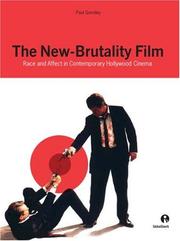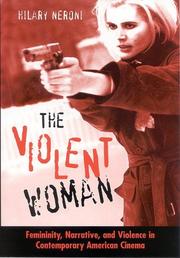| Listing 1 - 3 of 3 |
Sort by
|

ISBN: 1280476990 9786610476992 1841509264 9781841509266 9781841501192 1841501190 9781280476990 Year: 2005 Publisher: Bristol, UK : Intellect,
Abstract | Keywords | Export | Availability | Bookmark
 Loading...
Loading...Choose an application
- Reference Manager
- EndNote
- RefWorks (Direct export to RefWorks)
The 1990's saw the emergence of a new kind of American cinema, which this book calls the "new brutality film." Violence and race have been at the heart of Hollywood cinema since its birth, but the new brutality film was the first kind of popular American cinema to begin making this relationship explicit. The rise of this cinema coincided with the rebirth of a long neglected strand of film theory, which seeks to unravel the complex relations of affect between the screen and the viewer. This book analyses and connects both of these developments, arguing that films like Falling Down, Reservoir Dogs,
Motion pictures --- Violence in motion pictures. --- Violence in moving-pictures --- Cinema --- Feature films --- Films --- Movies --- Moving-pictures --- Audio-visual materials --- Mass media --- Performing arts --- Social aspects --- History and criticism

ISBN: 1841501190 9781841501192 Year: 2005 Publisher: Bristol Intellect
Abstract | Keywords | Export | Availability | Bookmark
 Loading...
Loading...Choose an application
- Reference Manager
- EndNote
- RefWorks (Direct export to RefWorks)
The 1990s saw the emergence of a new kind of American cinema, which this book calls the "newbrutality film." Violence and race have been at the heart of Hollywood cinema since its birth, but the newbrutality film was the first kind of popular American cinema to begin making this relationship explicit. The rise of this cinema coincided with the rebirth of a longneglected strand of film theory, which seeks to unravel the complex relations of affect between the screen and the viewer. This book analyses and connects both of these developments, arguing that films like Falling Down, Reservoir Dogs,
Motion pictures --- Race in motion pictures. --- Violence in motion pictures. --- History. --- Film --- Los Angeles --- #SBIB:309H1326 --- #SBIB:309H520 --- Films met een amusementsfunctie en/of esthetische functie: genres en richtingen --- Audiovisuele communicatie: algemene werken --- Violence au cinéma --- Cinéma --- Social aspects --- Aspect social --- Race in motion pictures --- Violence in motion pictures --- Violence in moving-pictures --- History --- Los Angeles [California]

ISBN: 0791483649 1423743911 9781423743910 0791463834 9780791463833 0791463842 9780791463840 9780791483640 Year: 2005 Publisher: Albany State University of New York Press
Abstract | Keywords | Export | Availability | Bookmark
 Loading...
Loading...Choose an application
- Reference Manager
- EndNote
- RefWorks (Direct export to RefWorks)
In The Violent Woman, Hilary Neroni brings psychoanalytically informed film theory to bear on issues of femininity, violence, and narrative in contemporary American cinema. Examining such films as Thelma and Louise, Fargo, Natural Born Killers, and The Long Kiss Goodnight, Neroni explores why American audiences are so fascinated—even excited—by cinematic representations of violent women, and what these representations reveal about violence in our society and our cinema. Neroni argues that violent women characters disrupt cinematic narrative and challenge cultural ideals, suggesting how difficult it is for Hollywood—the greatest of ideology machines—to integrate the violent woman into its typical narrative structure.
Women in motion pictures. --- Violence in motion pictures. --- Motion pictures --- Violence in moving-pictures --- Developmental psychology --- Depth psychology --- Social problems --- Sociology of the family. Sociology of sexuality --- Film --- United States --- United States of America --- Aggression --- Movies --- Violence --- Psychoanalysis --- Images of women --- Féminité --- Book
| Listing 1 - 3 of 3 |
Sort by
|

 Search
Search Feedback
Feedback About UniCat
About UniCat  Help
Help News
News